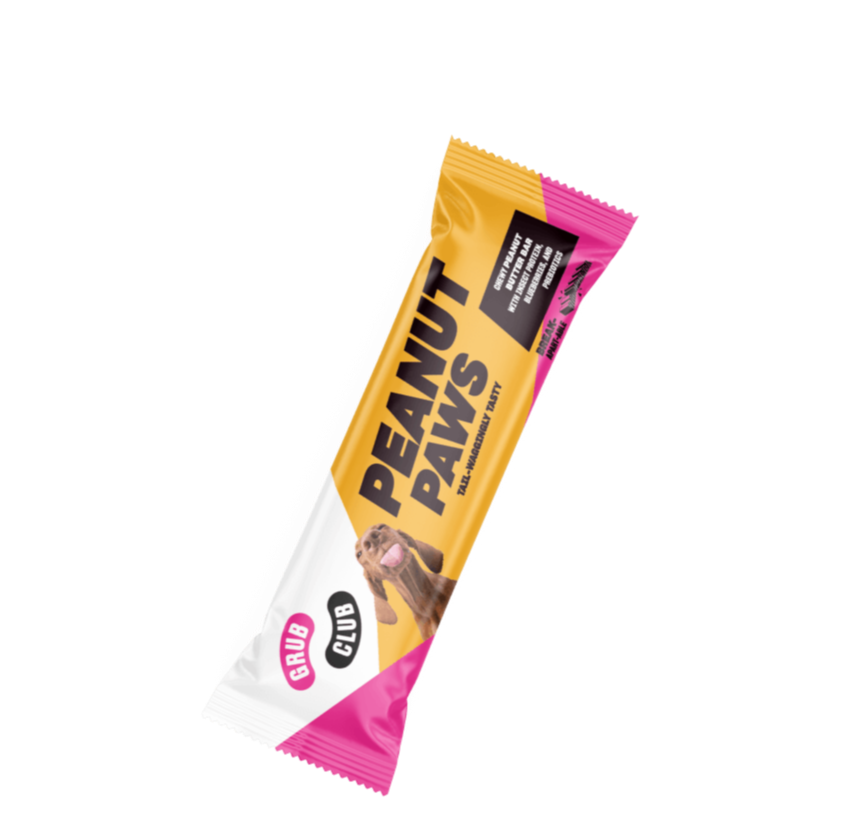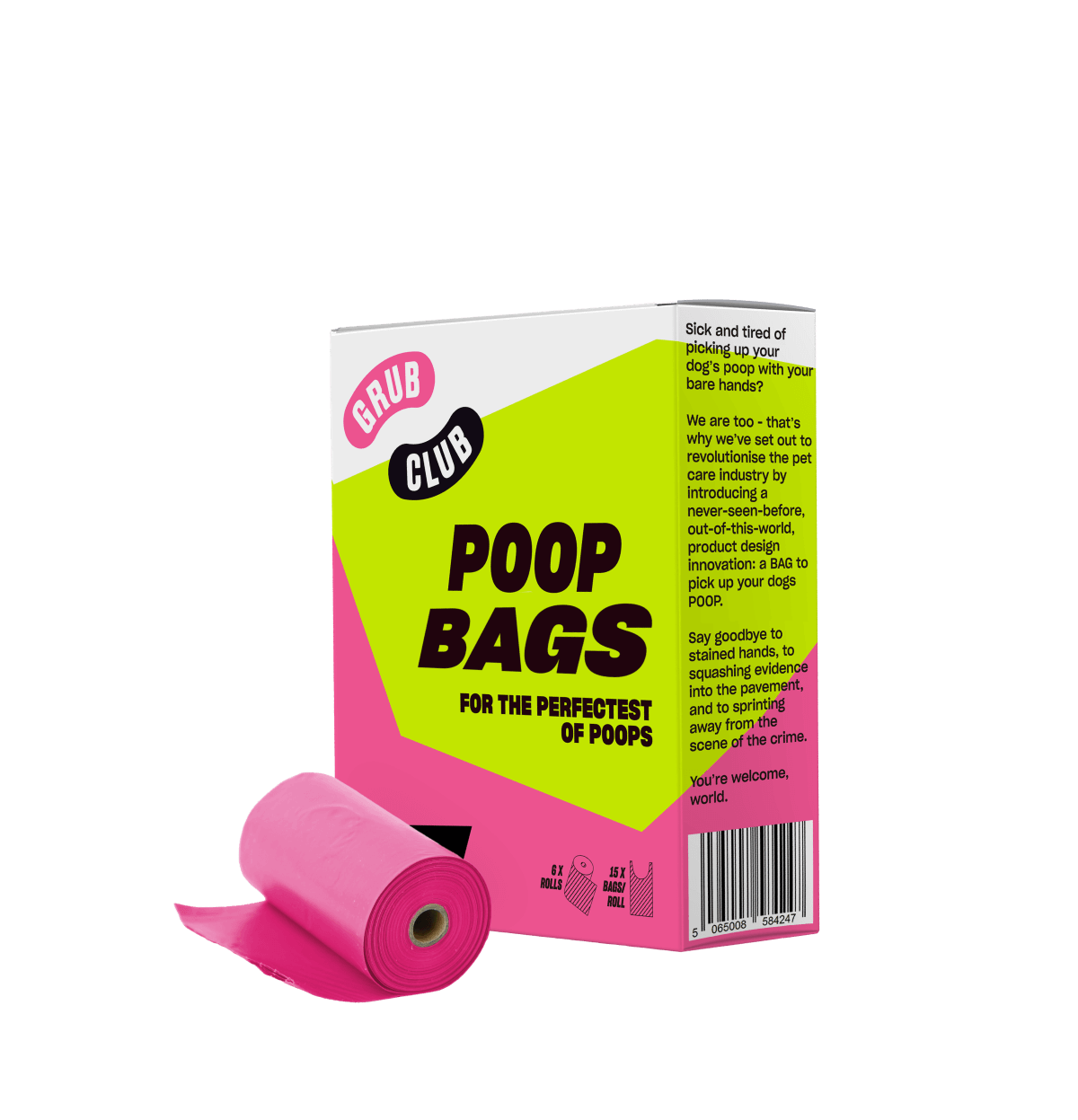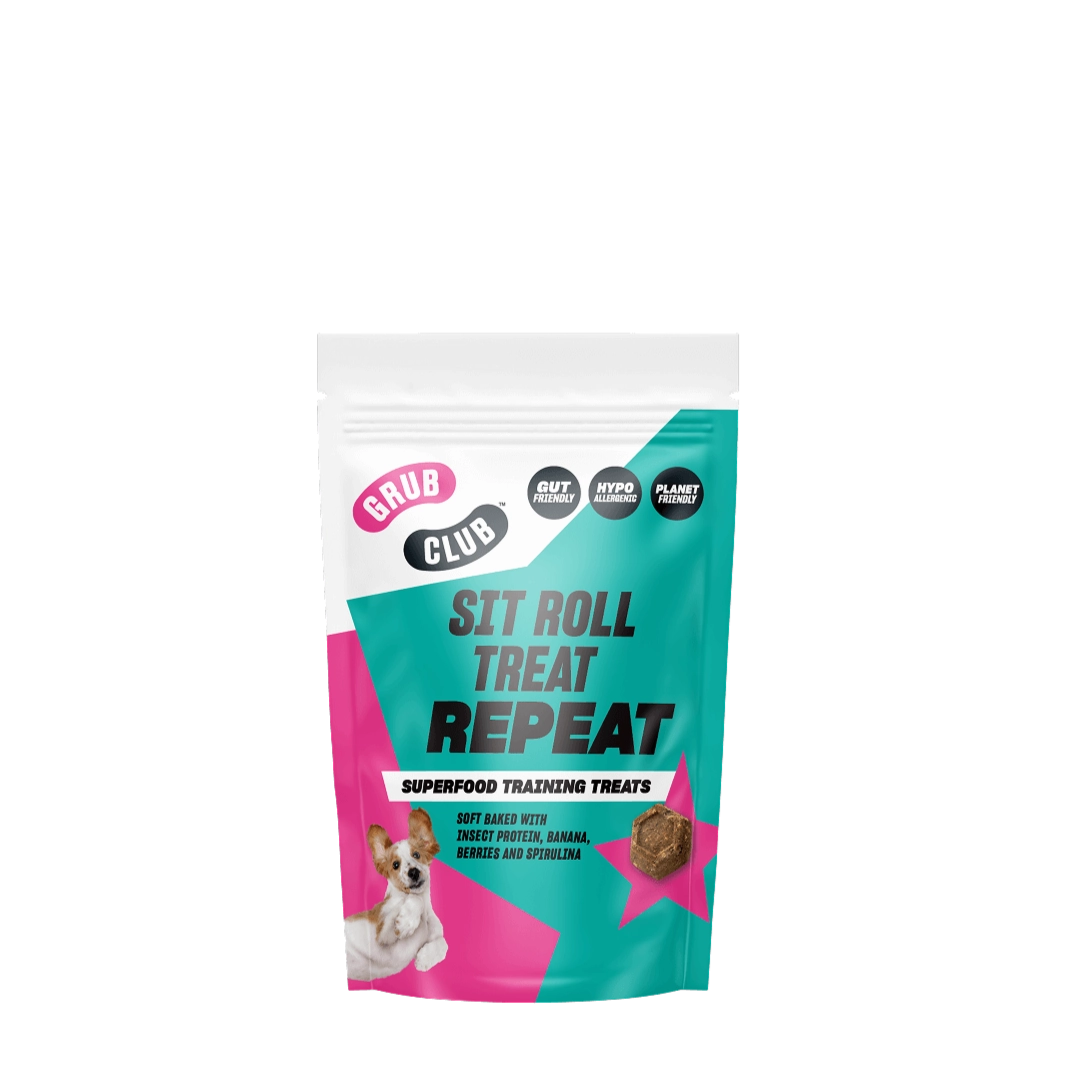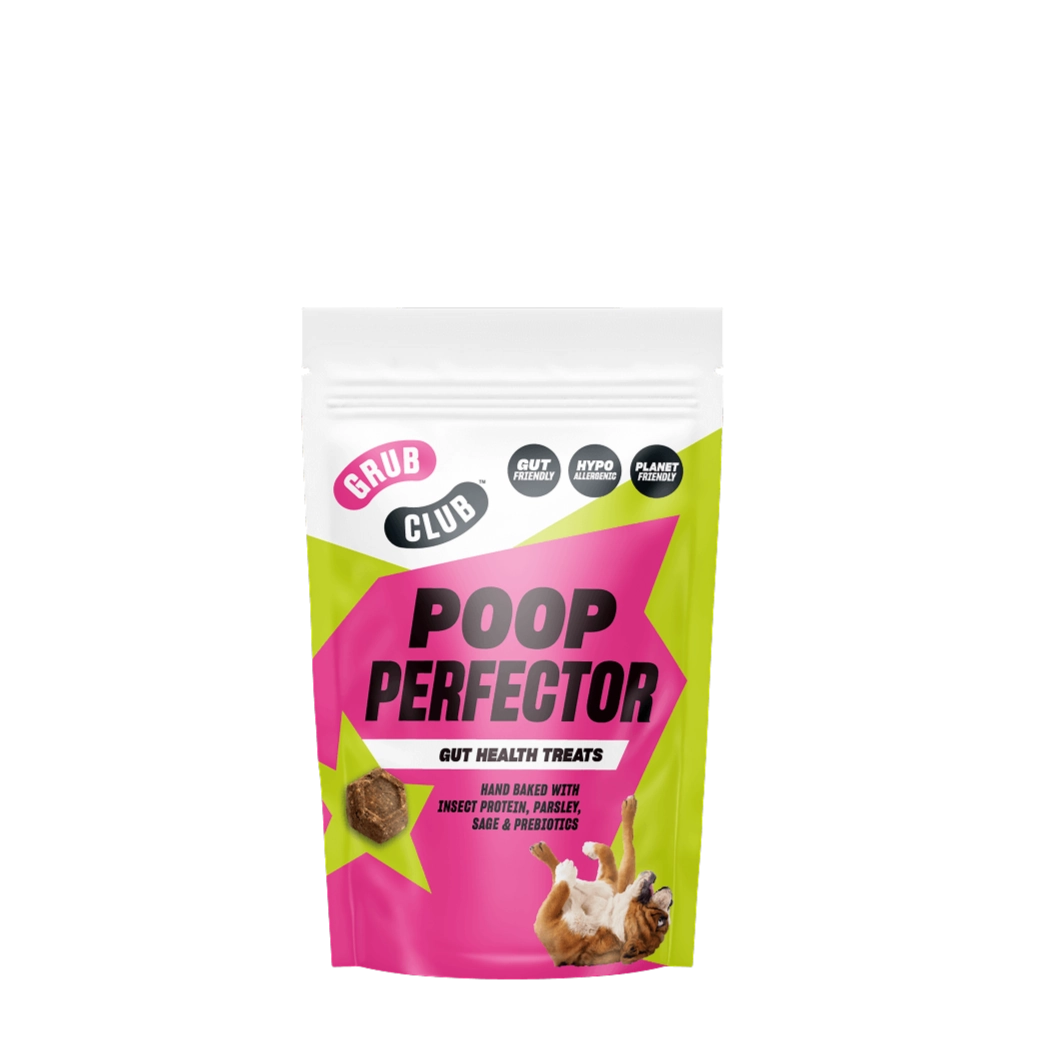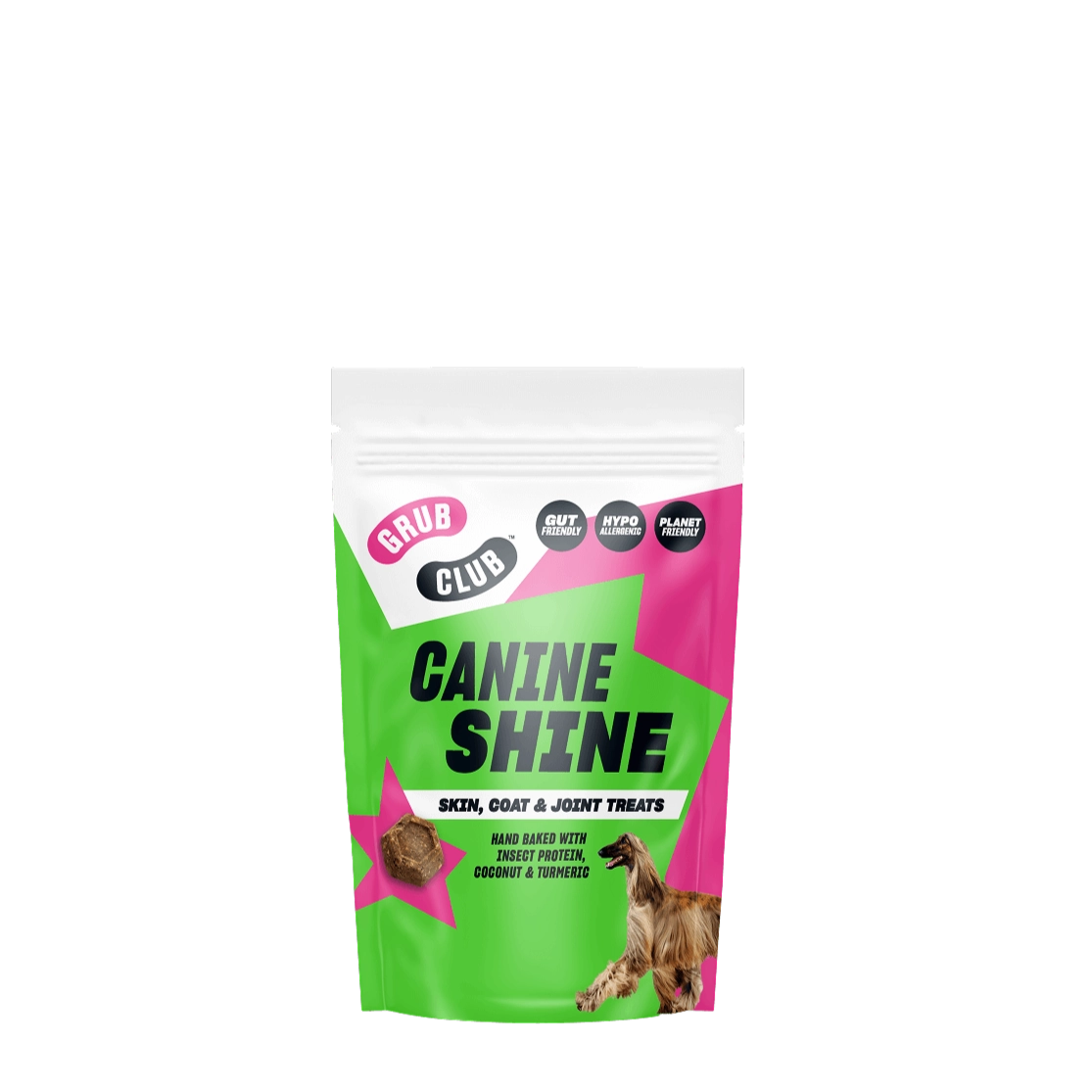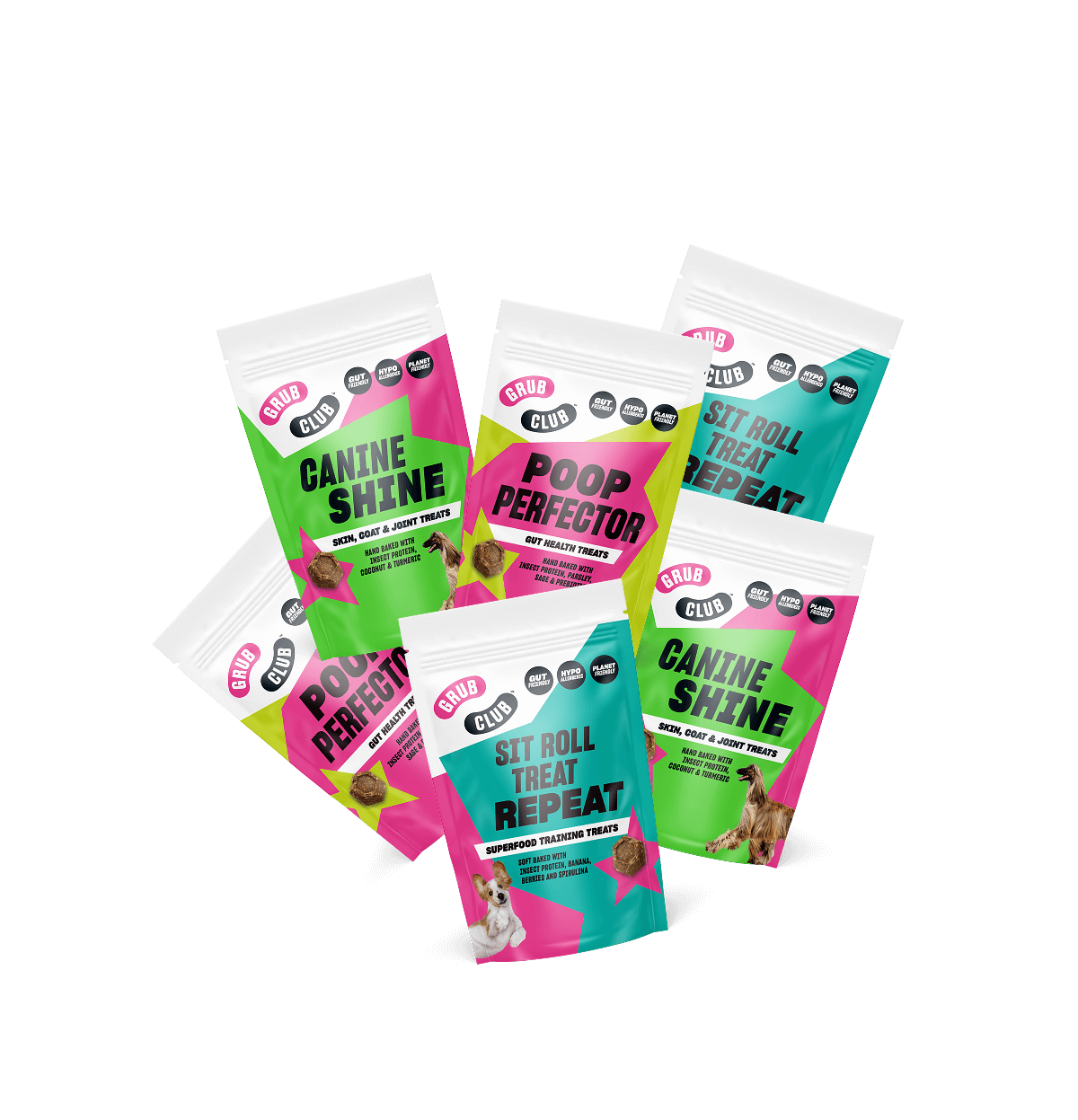Top Dog: All-In-One
Supplement for Snout-to-Tail Wellness
60 Scoops
FREE UK Delivery on orders above £49.
You have £0.00 in your cart, spend £49.00 more and get free shipping.
60 Scoops
1 Bar
72 Bags
1 Pack
1 Pack
1 Pack
Or continue without a name
CheckoutConsidering switching your dog’s food? It’s a minefield out there. From nutritional benefits and sustainability, to price and general convenience, we all want what’s best for our dogs. We explore the pros and cons of raw feeding vs insect-based dog food.
It may come as no surprise that at Grub Club, we’re firmly not on Team Raw. But hey, we like to think we’re decent people so we’re here to give you a balanced argument when it comes to choosing the best option for your dog (because we’re always Team Dog).
We get it, you’re super busy, so this handy chart is a quick guide to the best dog food for nutrition, sustainability, price, allergies, awareness (most common and longer term research), and ease (preparation, serving and transition).
But for the full lowdown, please keep reading!

If you’ve got a fussy dog, raw feeding could be the way forward as it’s proven to be a palatable diet for your canine friend.
One of our favourite subjects at Grub Club is dog poop. Yep, toilet talk is firmly on the table here at GC HQ and we’ve got to be honest… Raw feeding is unlikely to unsettle your dog’s stomach and can be a suitable alternative to kibble, especially if your dog has allergies to grains.

Okay, hands up if you let your dog lick your face? *nervously raises hand* It’s not the most hygienic practice at the best of times (who can resist those kisses?) but when it comes to raw feeding, it’s a massive no, no and here’s why...
Raw feeding carries significant risks to both human and animal health due to potential for bacterial and parasitic infections such as salmonella, campylobacter, mycobacteria and toxoplasma - to name a few. You can pick up these nasty bugs by contamination of surfaces, food bowls and through your dog licking your hands and face. Yuck!
When shopping around for dog food, you might see the term ‘nutritionally complete’. This means the dog food provides balanced nutrition for everyday feeding. AKA… You don’t need to feed your dog anything else other than their dog food to provide them with the nutrients they need to survive (and thrive!).
This is where raw feeding falls down. It can be difficult (not to mention time consuming) to provide the correct nutritional balance for your dog if you’re preparing raw food at home. Raw feeding can carry a significant risk of potential dietary insufficiencies and nobody’s got time for that.
Any responsible dog owner knows that feeding bones to your dog carries big risks. Even raw bones can cause tooth fractures (not good for that canine smile) but worse still, they can lead to obstructions in the oesophagus, stomach or small intestines.
Poor nutrition, risk of bacterial infections and tooth fractures aside, raw feeding isn’t the most convenient method for pet owners either. Raw dog food is typically more expensive than feeding your dog kibble and it’s time consuming to prep and clean afterwards.
At Grub Club, we’re big fans of spending less time feeding and more time playing and taking cute pics of our dogs for the gram.

Did you know pets eat 20% of the world’s fish and meat? *Cue the simultaneous sound of jaws dropping all over the UK*
Meat-based agriculture is one of the leading causes of climate change. Insect protein requires less land and water than farmed meat and generates up to 97% less greenhouse gases. Win, win.
Switching your dog over to an insect-based diet is an excellent way humans can help to preserve the planet. Because big carbon footprints are soooo 2018.

It’s a fact: bugs taste best. We tried over 20 recipes, ran lots of tests (let’s say we weren’t short of four-legged volunteers) and when compared to other meat-based treats, 90% of dogs chose Grub Club every time.
Insect protein has officially been approved by Reggies, Berties, Bellas and Teddys, all over the UK.
Insects can provide up to two times more protein per 100g compared to beef. Holy cow!
Insect-based dog food is a really good alternative for dogs that suffer with allergies to meat and grains. That means less itching and scratching and much rosier farts (from the dog that is).
They’re few and far between (we promise!).
Insects don’t have a reputation for being the cutest creatures on the planet and one of the questions we’re most frequently asked is: ‘Does your dog food look like insects?’. The answer? Absolutely not. It’s just kibble.
Insect-based dog food is still a pretty new phenomenon but we know it’s here to stay. Compared to other dog foods that have been around for much longer, there is less long term evidence to back up the efficiency of insect protein. However, the current view is very positive for its benefits.

